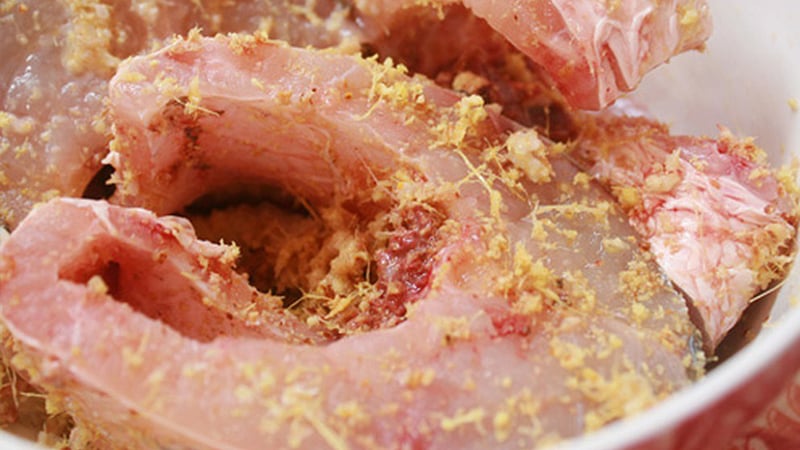Marinate the fish before cooking

When marinating the fish, you should not add too many elaborate spices. After cleaning and cutting the fish into pieces, put it in a large bowl and add a little bit of delicious fish sauce, soy sauce, chicken powder, or salt, finely chopped dried onions (optional)… then marinate for about 2 hours to let the flavors soak in.
Marinating for that long also helps make the fish more firm and aromatic. If you don’t have time, you can marinate for 50 minutes.
What seasonings to use for braising fish?

It’s recommended to use homemade broth for braising to make the fish more fragrant. If you want the fish meat to be tender and fatty, you should also add a little bit of pork belly to the braising pot, ensuring a much more enticing flavor. If you don’t have pork belly, you can add a little bit of cooking oil or lard to prevent the fish from drying out and make it more succulent.
When braising, you add the fish along with the accompanying braising ingredients into the pot. Remember to alternate layers of fish with layers of ginger or pork belly. Add the broth, if the broth is not enough to submerge the fish, add warm water, and boil on high heat.
During the braising process, you should also add 1 tablespoon of pure fish sauce. Pure fish sauce, known for its aroma and intense flavor, is the “eternal nemesis” of fishy smell. It can easily help you get rid of the fishy odor during cooking.

Some people also use pure fish sauce to wash and remove the fishy smell of fish innards. Moreover, pure fish sauce makes the fish meat even more tender, enhancing the flavor.
When the fish is boiling, cover the pot and simmer on low heat, braising for about 40-45 minutes until the fish meat is tender and cooked.

If you like two-layered braised fish, after the above braising time, you can let the braising pot rest. Before serving, reheat the pot on the stove one more time.
Unlocking the Simple Solution to Combatting Odors of All Types of Meat
In order to ensure that your meat-based dishes not only taste great, but also do not give off any unpleasant odor, it is essential to find ways to deodorize popular meats such as beef, pork, chicken, and fish.
4 Strategies for Storing Chili for One Month
Do you want to enjoy the fresh, spicy flavor of chili peppers all month long? Look no further! This article provides tips and tricks for storing chili peppers so that they stay fresh and flavorful for up to a month. Learn how to best preserve your peppers and savor their zesty taste for weeks to come.



































